Prepare for AP Physics C: Mechanics with this detailed cheat sheet, covering kinematics, Newton’s laws, energy, momentum, rotation, oscillations, and gravitation. Ideal for quick review before exams or during problem-solving.
Free AP Physics C: Mechanics Practice Test
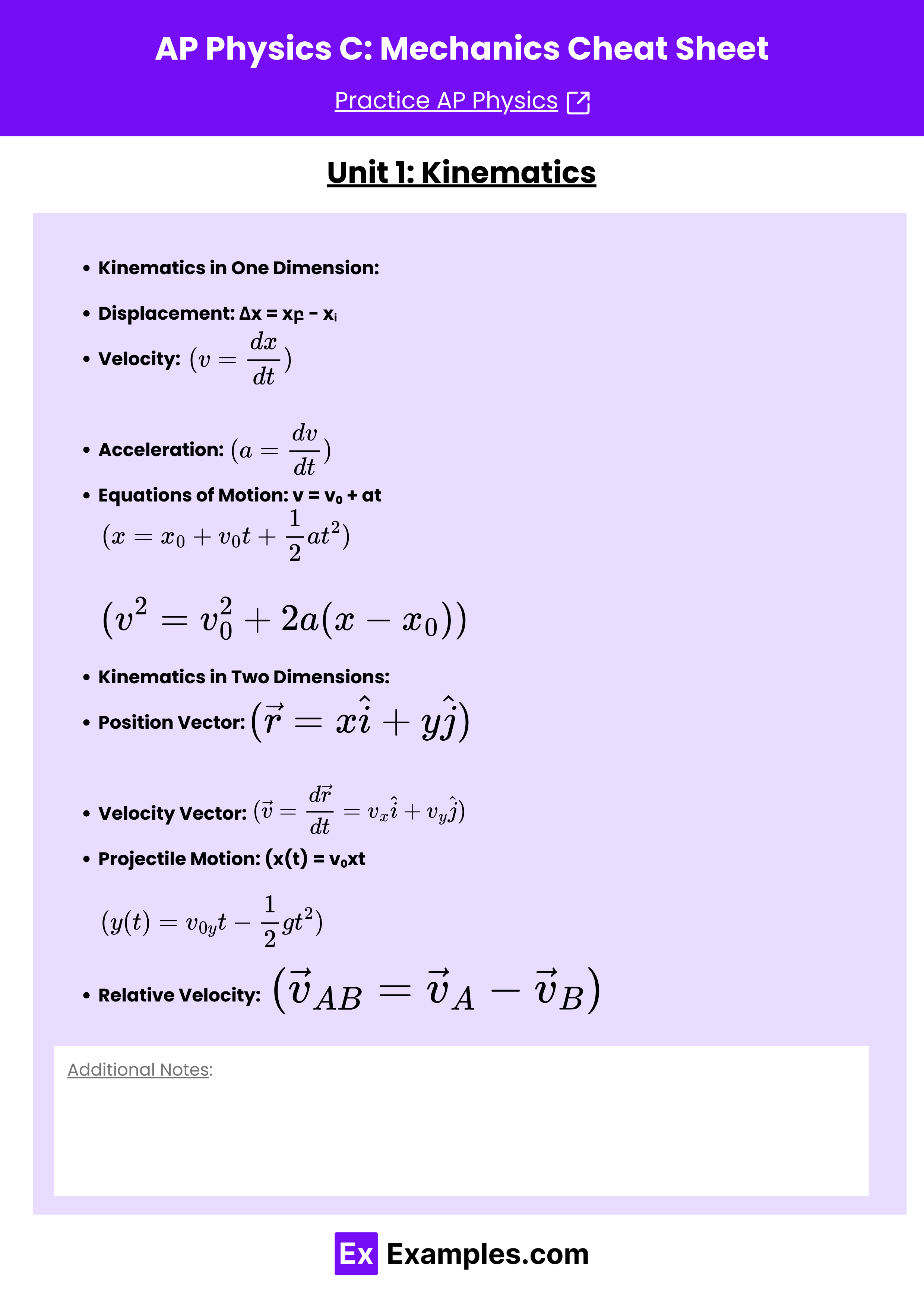
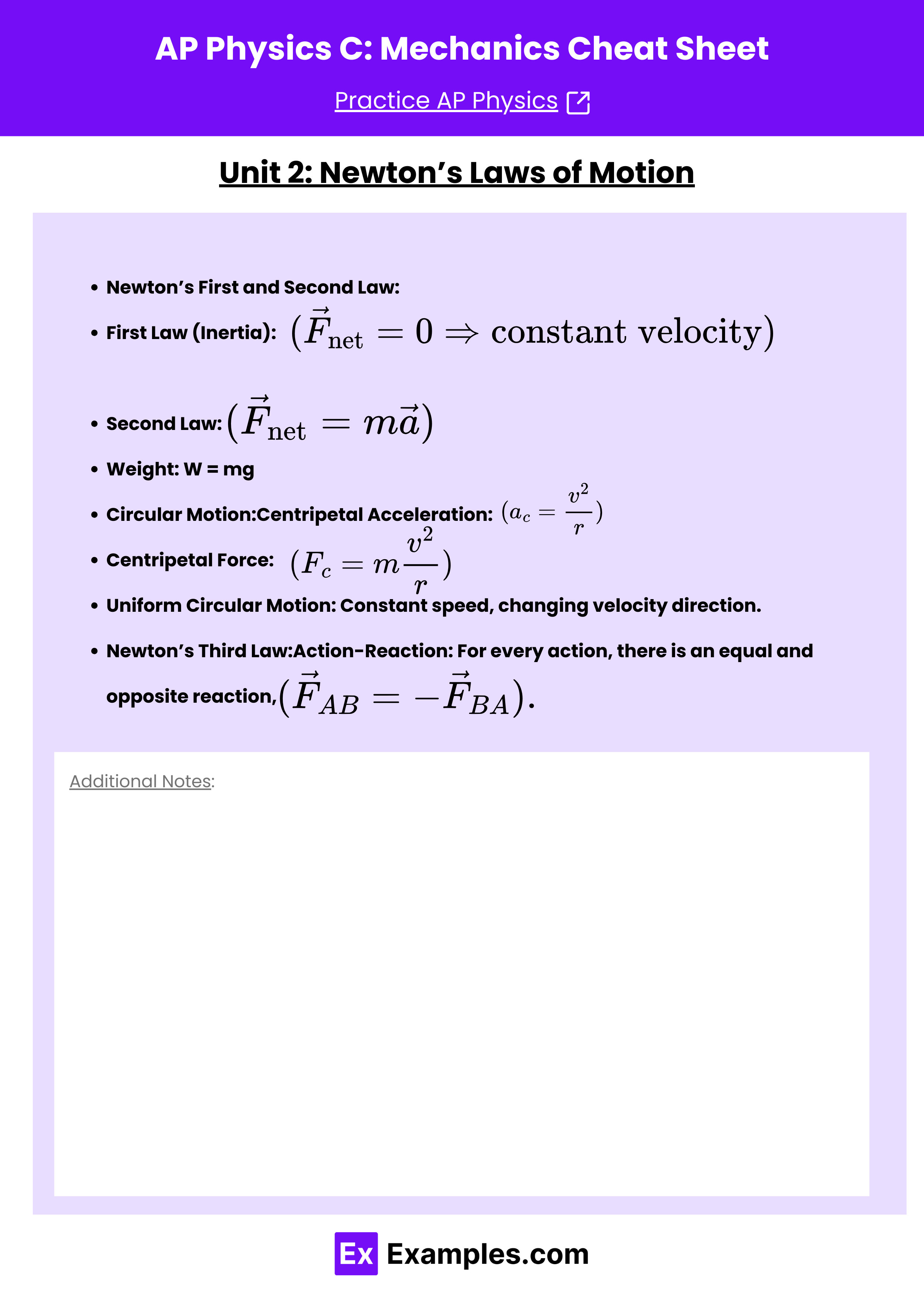
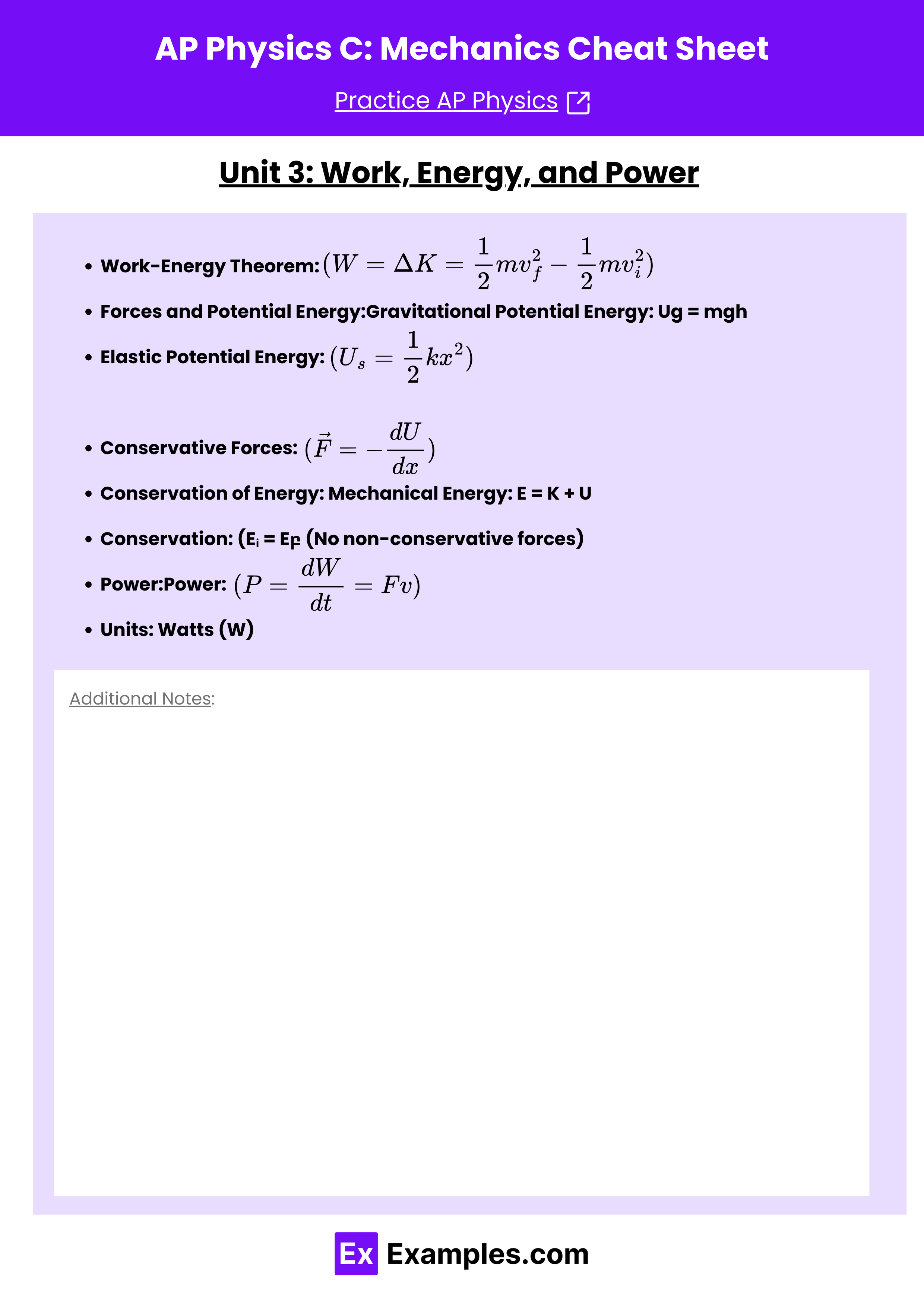
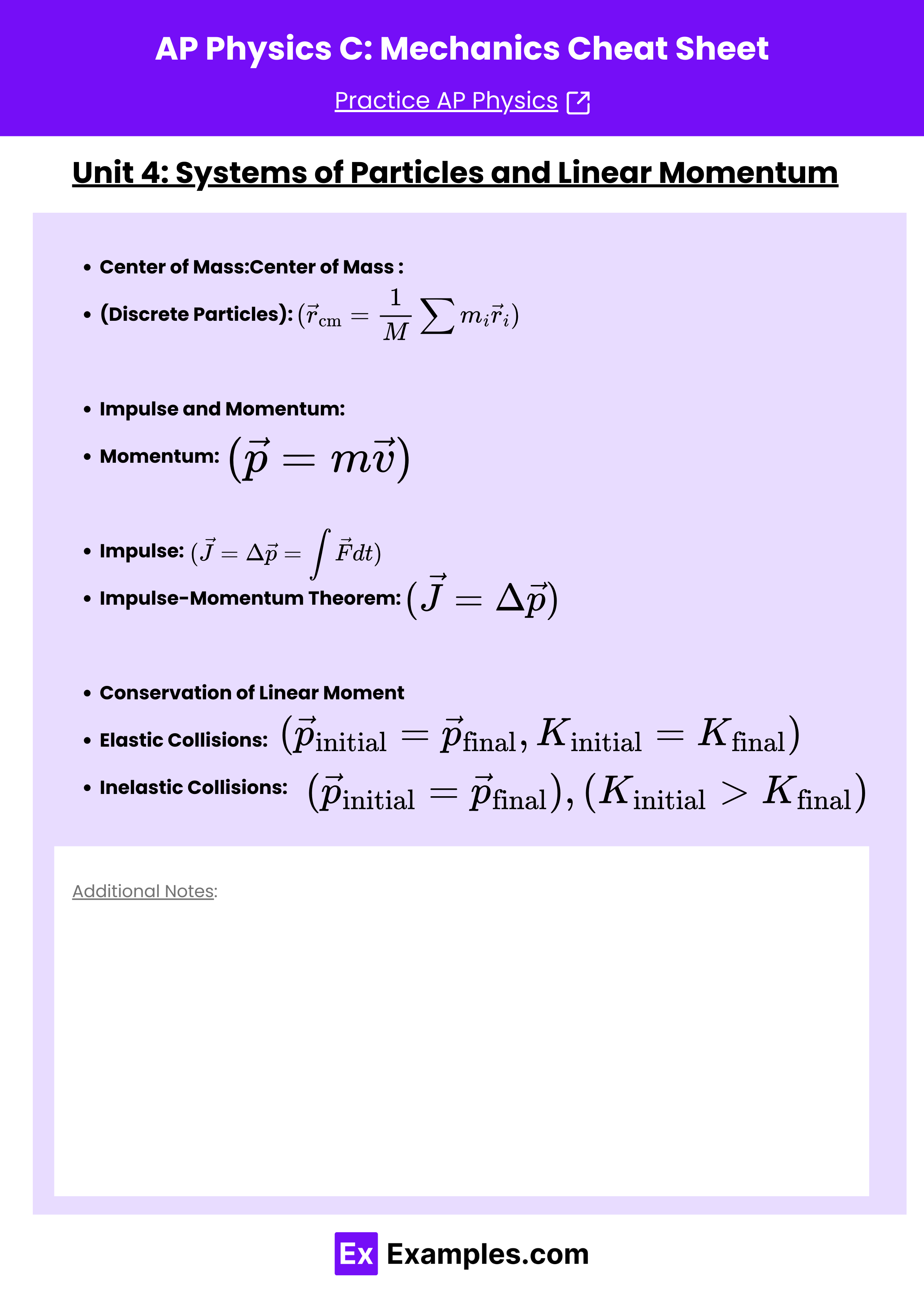
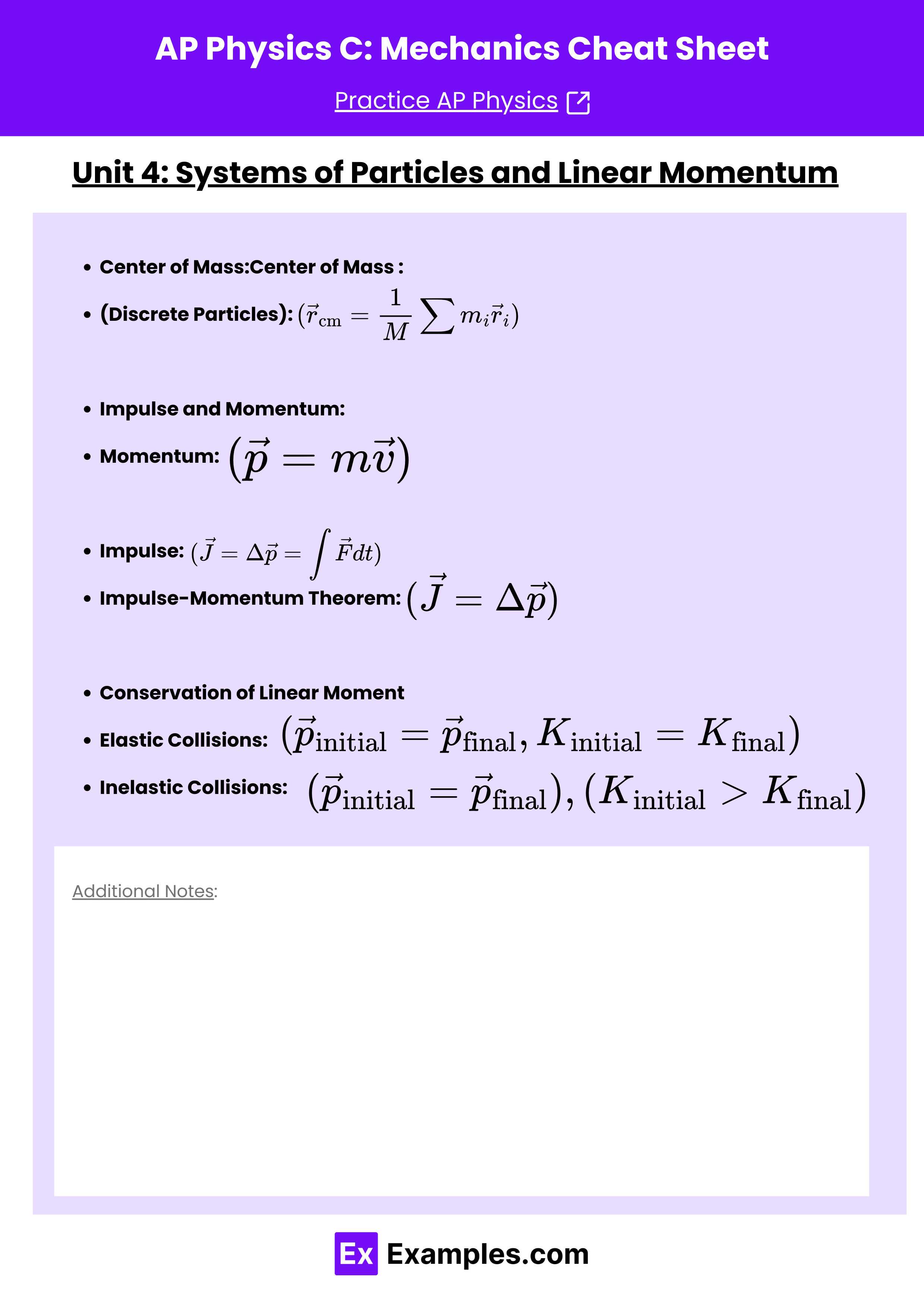


Download AP Physics C: Mechanics Cheat Sheet – Pdf
Unit 1: Kinematics
Kinematics in One Dimension:
Displacement:
Velocity:
Acceleration:
Equations of Motion:
Kinematics in Two Dimensions:
Position Vector:
Velocity Vector:
Projectile Motion:
Relative Velocity:
Unit 2: Newton’s Laws of Motion
Newton’s First and Second Law:
First Law (Inertia):
Second Law:
Weight: W = mg
Circular Motion:
Centripetal Acceleration:
Centripetal Force:
Uniform Circular Motion: Constant speed, changing velocity direction.
Newton’s Third Law:
Action-Reaction: For every action, there is an equal and opposite reaction, .
Unit 3: Work, Energy, and Power
Work-Energy Theorem:
Forces and Potential Energy:
Gravitational Potential Energy:
Elastic Potential Energy:
Conservative Forces:
Conservation of Energy:
Mechanical Energy: E = K + U
Conservation: (No non-conservative forces)
Power:
Power:
Units: Watts (W)
Unit 4: Systems of Particles and Linear Momentum
Center of Mass:
Center of Mass (Discrete Particles):
Impulse and Momentum:
Momentum:
Impulse:
Impulse-Momentum Theorem:
Conservation of Linear Momentum:
Elastic Collisions:
Inelastic Collisions: ,
Unit 5: Rotation
Torque and Rotational Statics:
Torque:
Rotational Equilibrium:
Rotational Kinematics:
Angular Displacement:
Angular Velocity:
Angular Acceleration:
Rotational Dynamics and Energy:
Rotational Inertia:
Newton’s Second Law for Rotation:
Rotational Kinetic Energy:
Angular Momentum and Its Conservation:
Angular Momentum:
Conservation of Angular Momentum:
Unit 6: Oscillations
Simple Harmonic Motion (SHM):
Position:
Velocity:
Acceleration:
Springs:
Hooke’s Law:
Spring Constant: k,
Pendulums:
Simple Pendulum:
Angular Frequency:
Unit 7: Gravitation
Gravitational Forces:
Newton’s Law of Universal Gravitation:
Gravitational Potential Energy:
Orbits of Planets and Satellites:
Orbital Speed:
Orbital Period: (Kepler’s Third Law)
FRQ Tips
Start with Free-Body Diagrams: Helps visualize forces and motion.
Use Energy Methods: Especially for conservative systems.
Check Units: Ensure consistency across all calculations.
Apply Conservation Laws: Momentum, energy, and angular momentum are key.
Explain All Steps: Clear reasoning can earn partial credit.

